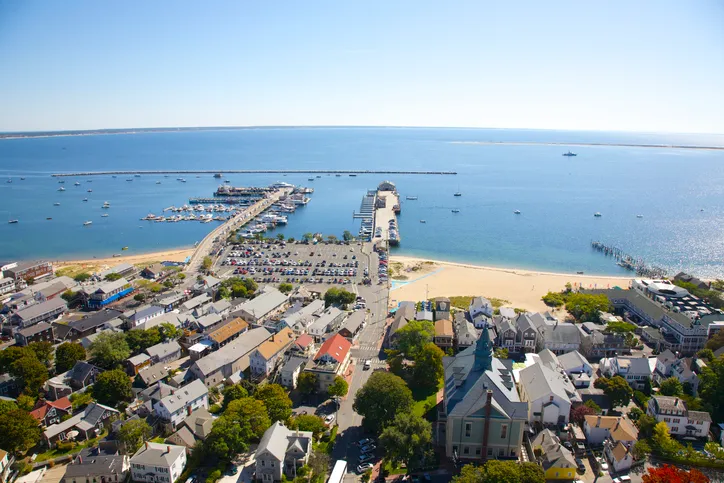Stunning new footage of a critically endangered North Atlantic right whale swimming with her new calf in Cape Cod Bay, USA, has been released by Woods Hole Oceanographic Institution (WHOI).
The mother – a 37-year-old female called Wolf – was first seen with her baby off the coast of Florida in December of 2023. They are one of five mother-and-calf pairs seen off New England this spring.
“It was exciting to see this new mom and her calf during our field work in Cape Cod Bay,” says Michael Moore, senior scientist at WHOI.
- Sperm whales have been seen pooing on orcas. But why?
- Watch: Astonishing ‘explosion of life’ coral spawning in Cambodia stuns scientists
- 100 new ocean species discovered off the coast of New Zealand
What are North Atlantic right whales?
North Atlantic right whales grow up to 18.5 metres long and weigh as much as 106,000kg.
Their huge heads make up a third of their total body length and, unlike many other whale species, they have no dorsal fin.
It’s possible to visually identify individuals by looking at the pattern of white bumps – called callosities – that grow on their heads like calluses.
What do North Atlantic right whales eat?
Right whales are a type of baleen whale, which means they feed on plankton. According to the charity Whale and Dolphin Conservation (WDC), “their favourite types [of plankton] are large copepods which are about the size of a grain of rice.”
As they swim along, they open their mouths and gobble up copepods, krill and small invertebrates. “The baleen plates in their mouths strain prey from seawater like a giant sieve,” says WDC.

How many North Atlantic right whales are there?
The youngster seen in Cape Cod Bay is one of 19 North Atlantic right whale babies born in the 2023-24 calving season and Wolf’s fourth known offspring. Of those 19 babies, one has sadly died after becoming entangled in fishing gear and four others are believed to have been fatally injured: two were involved in boat collisions and two have gone missing.
“This year alone, the U.S. East Coast has become a graveyard for North Atlantic right whales,” says Julia Singer, a marine scientist at Oceana.
These deaths are hugely troubling for this already threatened population. There was once around 21,000 right whales on the planet but, as a result of whaling (whalers' preference for the species was even mentioned in the novel Moby Dick), this number has fallen to just a few hundred.
“There are approximately 360 North Atlantic right whales left on the planet, and fewer than 70 reproductively active females,” says Moore. “Every North Atlantic right whale is vital to the species’ recovery.”
“There are approximately 360 North Atlantic right whales left on the planet"
Why are they struggling?
One reason North Atlantic right whales are struggling is their distribution. They’ve been given the nickname ‘the urban whale’ because the areas of ocean they call home – close to shore between Florida and Atlantic Canada – coincides with lots of human activity. This means they’re more likely to come into contact with fishing gear or vessels that could harm them.
Despite protections, these animals are dying more quickly than they can reproduce. “After right whales were nearly wiped out by centuries of whaling, today their dwindling populations are still threatened by vessel strikes, entanglement in fishing gear, and climate change,” explains Matt Collis, Deputy Vice President – Policy at the International Fund for Animal Welfare (IFAW).
A recent study also showed that right whales are getting smaller, which reduces their ability to successfully reproduce. “These whales rely on stored energy resources (in the form of lipids) to support the costs of reproduction,” says study author Enrico Pirotta, an ecologist at University of St Andrews. A smaller female can store less energy, which could impact her ability to breed.

What's being done to help them?
Environmentalists are exploring several different ways of protecting North Atlantic right whales. Speed restrictions are currently in place for vessels over 65 feet (19.8 metres) but NOAA Fisheries wants these to be enforced for vessels over 35 feet (just over 10 metres) because smaller boats have also hit and killed calves.
There are also new innovations in fishing technologies, such as ropeless fishing gear which prevents entanglement by only releasing its buoy line when the fishers need to retrieve their catch, reducing the likelihood of whale entanglement.
More protections can’t come soon enough, says Singer: “For one of the most endangered large whales on the planet, every single North Atlantic right whale calf is vital to avoid extinction.”
More marine stories:

